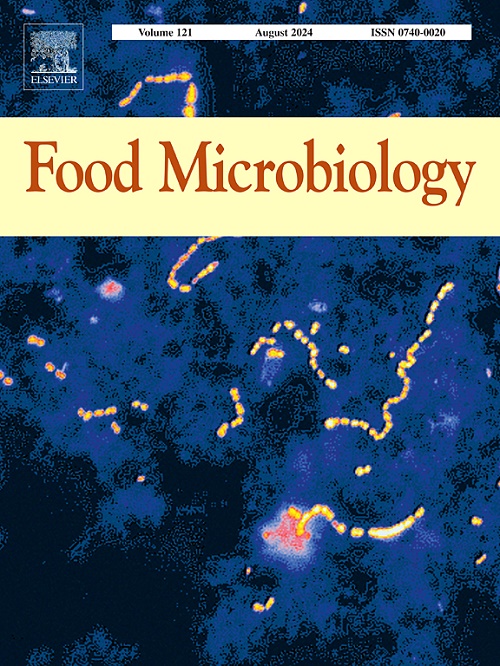"Emerging technologies for detecting foodborne pathogens and spoilage microorganisms in milk: Ensuring safety and quality"
IF 4.5
1区 农林科学
Q1 BIOTECHNOLOGY & APPLIED MICROBIOLOGY
引用次数: 0
Abstract
Foodborne and spoilage microorganisms pose significant challenges to both food safety and product integrity, particularly within the dairy industry. These microorganisms can adversely affect milk quality, safety, shelf life, and the overall sustainability of the dairy industry, making their detection a critical concern in food science. This review explores a range of emerging and innovative detection techniques, including molecular, immunological, and sensor-based methods, with a focus on their practical implementation in dairy microbiology. While culture-based methods remain the gold standard, they suffer from several limitations, including being time-consuming, labor-intensive, costly, and less effective at detecting non-culturable microorganisms. Recent advancements in rapid, high-throughput, and high-sensitivity detection technologies have transformed the ability to identify and control both foodborne pathogens and spoilage microorganisms in milk, offering superior accuracy, efficiency, and real-time monitoring capabilities. This review provides a comprehensive overview of cutting-edge microbial detection approaches in milk, highlighting the key characteristics of these emerging methods developed in recent years. Furthermore, global regulatory standards in milk microbiology among eight representative countries were comparatively analyzed to elucidate the current landscape of dairy microbiology regulatory frameworks. Our primary objective is to synthesize current scientific research to offer insights into the effectiveness, practicality, and industry adoption of these emerging detection technologies. We critically examine studies that have contributed to the development of rapid and accurate microbial detection methods, assessing their impact on food safety, quality assurance, and regulatory compliance. By consolidating and analyzing cutting-edge advancements in microbial detection, this review aims to contribute to ongoing efforts to strengthen both food safety and quality assurance in the dairy industry by integrating novel detection technologies into routine monitoring practices. We aim to provide a valuable resource for researchers, industry professionals, and policymakers, facilitating informed decision-making and promoting the adoption of effective microbial detection strategies from dairy farms to consumer products.
检测牛奶中食源性病原体和腐败微生物的新兴技术:确保安全和质量
食源性和腐败微生物对食品安全和产品完整性构成重大挑战,特别是在乳制品行业。这些微生物会对牛奶的质量、安全性、保质期和乳制品行业的整体可持续性产生不利影响,因此对它们的检测是食品科学中的一个关键问题。本文综述了一系列新兴和创新的检测技术,包括分子、免疫学和基于传感器的方法,重点介绍了它们在乳制品微生物学中的实际应用。虽然以培养为基础的方法仍然是金标准,但它们存在一些局限性,包括耗时、劳动密集、成本高、检测不可培养微生物的效率较低。快速、高通量和高灵敏度检测技术的最新进展已经改变了识别和控制牛奶中食源性病原体和腐败微生物的能力,提供了卓越的准确性、效率和实时监测能力。本文综述了最新的牛奶微生物检测方法,强调了近年来这些新兴方法的主要特点。此外,比较分析了八个具有代表性的国家在牛奶微生物学方面的全球监管标准,以阐明乳制品微生物学监管框架的现状。我们的主要目标是综合当前的科学研究,以提供对这些新兴检测技术的有效性、实用性和行业采用的见解。我们严格审查那些有助于开发快速准确的微生物检测方法的研究,评估它们对食品安全、质量保证和法规遵从性的影响。通过整合和分析微生物检测的前沿进展,本综述旨在通过将新的检测技术整合到日常监测实践中,为加强乳制品行业的食品安全和质量保证做出贡献。我们的目标是为研究人员、行业专业人士和政策制定者提供宝贵的资源,促进明智的决策,并促进从奶牛场到消费者产品采用有效的微生物检测策略。
本文章由计算机程序翻译,如有差异,请以英文原文为准。
求助全文
约1分钟内获得全文
求助全文
来源期刊

Food microbiology
工程技术-生物工程与应用微生物
CiteScore
11.30
自引率
3.80%
发文量
179
审稿时长
44 days
期刊介绍:
Food Microbiology publishes original research articles, short communications, review papers, letters, news items and book reviews dealing with all aspects of the microbiology of foods. The editors aim to publish manuscripts of the highest quality which are both relevant and applicable to the broad field covered by the journal. Studies must be novel, have a clear connection to food microbiology, and be of general interest to the international community of food microbiologists. The editors make every effort to ensure rapid and fair reviews, resulting in timely publication of accepted manuscripts.
 求助内容:
求助内容: 应助结果提醒方式:
应助结果提醒方式:


